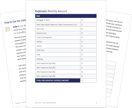The cruel irony of economic downturns is their tendency to disproportionately impact the populations least equipped to withstand them. The downturn caused by the ongoing Covid-19 pandemic is no different.
A 2020 report from the Brookings Institution shows that people between the ages of 16 and 29 years old represent less than one-fourth of the workforce, yet account for one-third of the rise in the unemployment rate during the first quarter of this year — meaning young people were more likely to be laid off than older workers in almost every industry.
An old maxim may help explain why: “Last person in, first person out.” When companies suddenly need to cut costs by thinning their ranks, the workers with the least experience are often treated as the most expendable. Debatable as that logic may be, the effects are crystal clear: Young people are getting thrown from their career trajectories and facing drastically different employment and economic prospects than they expected only a year ago.
If you were a salaried worker before the pandemic who is now seeking employment in a weakened economy, you may find that hourly jobs are a bit easier to land right now. Though this may feel disheartening for those of you looking for a steadier income, it doesn’t have to be. As a financial advisor for more than 10 years in the Bay Area and a personal finance professor at UC Berkeley Extension, I’ve worked with many people in similar situations (including myself) who have gotten back on their feet.
If you know what steps to take, you don’t have to lose financial ground as a newly minted hourly worker.
Hope for the best, plan for the worst, budget for all.
One upside of hourly employment is the ability to be more flexible with your schedule. Enjoy that newfound freedom, but don’t lose track of time. Whether you eventually want to move back into a salaried role or work your way up in your new hourly position, there are always ways to keep moving forward.
Set career goals for yourself and create a timeline to help you achieve them. Be realistic: That timeline could span three months to two years. For example, if you plan to return to a salaried role, apply for three jobs a week. If you want to stay with the hourly job, figure out what it takes to move into a managerial position. Either way, write your plan down. Research shows you are 42% more likely to accomplish what you document.
As part of your plan, build a budget that can sustain you in case lightning strikes twice. Start by saving up an emergency fund that will cover at least three months of your expenses. And even though money might be tight right now, don’t stop accounting for debt payments. At the very least, make minimum payments while you work back up to a financial standing where you can pay the normal amount.
Investigate overtime pay.
Perhaps an even bigger advantage of hourly employment is the ability to earn overtime pay when you work more than a specified number of hours in a week. Though companies and states have different policies, federal law requires that hourly employees who work more than 40 hours in a given week have to be paid 1.5 times their regular pay rate — and that’s at the minimum.
Businesses with more than $500,000 in yearly sales, enterprises that practice any kind of interstate commerce, and health, education, or government-formed businesses must follow this law, known as the Fair Labor Standards Act (FLSA). At the beginning of 2020, the FLSA was updated to make 1.3 million more workers eligible for overtime pay.
Salaried employees typically are not required to earn overtime, but hourly workers can benefit financially by putting in extra hours. To calculate how much you would make working overtime, follow this formula:
(Regular Pay Rate x 40 Hours = Regular Pay) + (Regular Pay Rate x 1.5 x Extra Hours Worked = Overtime Pay) = Total Earnings for the Week
For instance, if you make $20 an hour and work 10 hours of overtime, you would earn your regular $800 plus an extra $300 for your overtime work, making your total income $1,100 that week (before taxes). To compare, a salaried worker who makes $50,000 a year would earn roughly $962 in the same amount of time.
All this to say, pay attention to your overtime options. According to an analysis of TSheets time sheet data recorded over the past six years, less than one third of employees are clocking overtime hours in fields where flexible schedules are more prevalent. This leaves plenty of money on the table for ambitious new hires to scoop up some extra cash if they’re willing to put in the hours.
When I was eligible for OT pay, I found it motivating to work more hours when I had a specific goal in mind for the extra cash. You might try the same strategy to push yourself. Maybe you could use the extra money to build up your emergency fund. If you’re located in the U.S., you might put it toward your IRA or another tax-advantaged retirement account.
Be sure to check for caps on overtime hours and work with your boss to determine how you can best fit them into your schedule.
Set up a retirement plan.
In 2019, the Setting Every Community Up for Retirement Enhancement (SECURE) Act was signed into law to help Americans save more for retirement. Though it has many other provisions, the SECURE Act makes long-term, part-time employees eligible for 401(k) plans.
Unfortunately, it won’t have any impact until after 2023. Don’t use this as an excuse to neglect your retirement savings goals until then, though. To ensure you’re able to retire when you want, look into what it might take to access a company’s 401(k) program.
If, as a contractor or freelancer, you aren’t eligible for a 401(k), you can set up a retirement plan on your own. Individual retirement accounts (IRAs) have lower contribution limits, but single people who don’t have access to an employer-sponsored retirement plan can make tax-deductible contributions to them regardless of their income.
Contributing to a traditional IRA early in your career gives you more time for the money to compound and grow. To illustrate the importance of starting early, a $5,000 contribution today will become $50,000 in 30 years (assuming the average growth rate of 8% per year). If you start contributing five years later, however, you would need to save $7,500 — or 50% more — to have $50,000 under the same conditions.
If you work in Europe, there are several options for setting up a retirement plan. Unsurprisingly, they differ by country. Generally, you can choose from a standard state pension, an employer-sponsored plan, or a supplementary pension plan that you’d take out on your own. The standard state pension is often recommended since it’s more regulated than supplementary plans. However, a 2018 survey found that 27% of European citizens aged 25 to 59 years have opened supplementary plans.
To help meet this demand, the European Commission proposed a pan-European personal pension product (PEPP) that would allow individuals to contribute to personal retirement accounts that accumulate over the long term — without penalty if withdrawn from early. Each country will decide whether to add PEPP to its retirement offerings. Ireland, for example, is expected to adopt it in 2021. While European policymakers are attempting to shift from public to private pensions, employer-sponsored retirement plans are still the norm.
FREE RESOURCES |
|||
 |
 |
 |
 |
|
Net Worth WORKSHEET |
Goal Planning WORKSHEET |
Cash Flow WORKSHEET |
Estate Planning MEMO |
Save for medical expenses.
In the U.S., the Affordable Care Act (ACA) requires businesses with 50 or more employees to subsidize health insurance for anyone who works more than 30 hours per week. Unfortunately, some companies circumvented this rule by limiting hourly employees from working more than 29 hours per week — or capping their employee counts at 49. According to the U.S. Bureau of Labor Statistics, only 23% of part-time workers had access to medical benefits from their employers in March 2020.
Without assistance from your employer, it’s important to save proactively for medical expenses and research your insurance choices via HealthCare.gov. The available policies vary from state to state, and the best one for you will depend on your current situation.
Consider your potential medical needs and the yearly costs to pick the best option. If you’ve recently been laid off, look for a plan with broad health care coverage (including vision and dental), an annual maximum out-of-pocket cost, and reasonable monthly premiums.
Your monthly premium — or the amount you pay for the insurance — will depend on your income and type of coverage. For a single person earning $40,000 a year, for example, premiums can range from $160 per month to $950 per month. Remember that lower premiums often come with higher out-of-pocket costs.
While premiums can be expensive, the risk of forgoing health insurance can be catastrophic. Even $160 a month feels like a lot when you’re on a tight budget, but an accident that lands you in the hospital can set you back thousands of dollars in medical bills without insurance. Plus, if you can technically afford insurance but opt out of it, you’ll end up having to pay a lot on your taxes anyway — so you might as well spend the money to protect yourself now.
Take the case of a former client: He was in his 50s and healthy when he suddenly had a stroke. He was in the hospital for a month and a half, and his bill was more than $250,000! Thankfully, his health insurance reduced his out-of-pocket expense to just $3,000.
On the other hand, my 20-something friend visited the hospital last year because she felt tired. They took a blood test, determined that her sodium levels were low, and kept her in the hospital for a week for observation. Her bill was $70,000. A $250,000 bill for my former client would have made a significant dent in his financial plans, but he had the savings to cover it if he hadn’t had insurance. For the friend in her 20s, however, a $70,000 bill would have bankrupted her and set her back for years.
Explore how to invest in yourself.
Looking for a job can give you tunnel vision, but you shouldn’t focus entirely on the short term. Use this setback to invest in yourself. What can you do now, even at the cost of time and money, to improve your long-term prospects? How can you expand your skills in ways that will enhance your credentials and elevate your earning potential?
With the sheer amount of information out there, upskilling has never been easier. You could take an online course on Coursera (which is offering hundreds of free classes until December 31st), Udemy, LinkedIn Learning, MasterClass, or Codecademy; listen to a free podcast on whatever skill you’re interested in mastering; or attend a virtual conference or webinar. The possibilities for learning are endless.
The flexibility of hourly employment enables you to pursue self-improvement in ways you can’t later in your career. Take advantage of this time. Small steps and minor sacrifices can lead to huge dividends years down the road.
Recent events have been difficult and demoralizing for large swaths of us — and for reasons entirely out of our control. While it’s easy to dwell on the past, this is a great time to look forward and explore the silver linings of any temporary setbacks. You have your whole career ahead of you, and this could be just the opportunity you need to invest in yourself and get things back on track (or take a welcome left turn).
Disclaimer: This material has been prepared for informational purposes only and should not be used as investment, tax, legal or accounting advice. All investing involves risk. Past performance is no guarantee of future results. Diversification does not ensure a profit or guarantee against a loss. You should consult your own tax, legal and accounting advisors.



.png?width=266&name=Copy%20of%20blog%20featured%20image%20(3).png)





